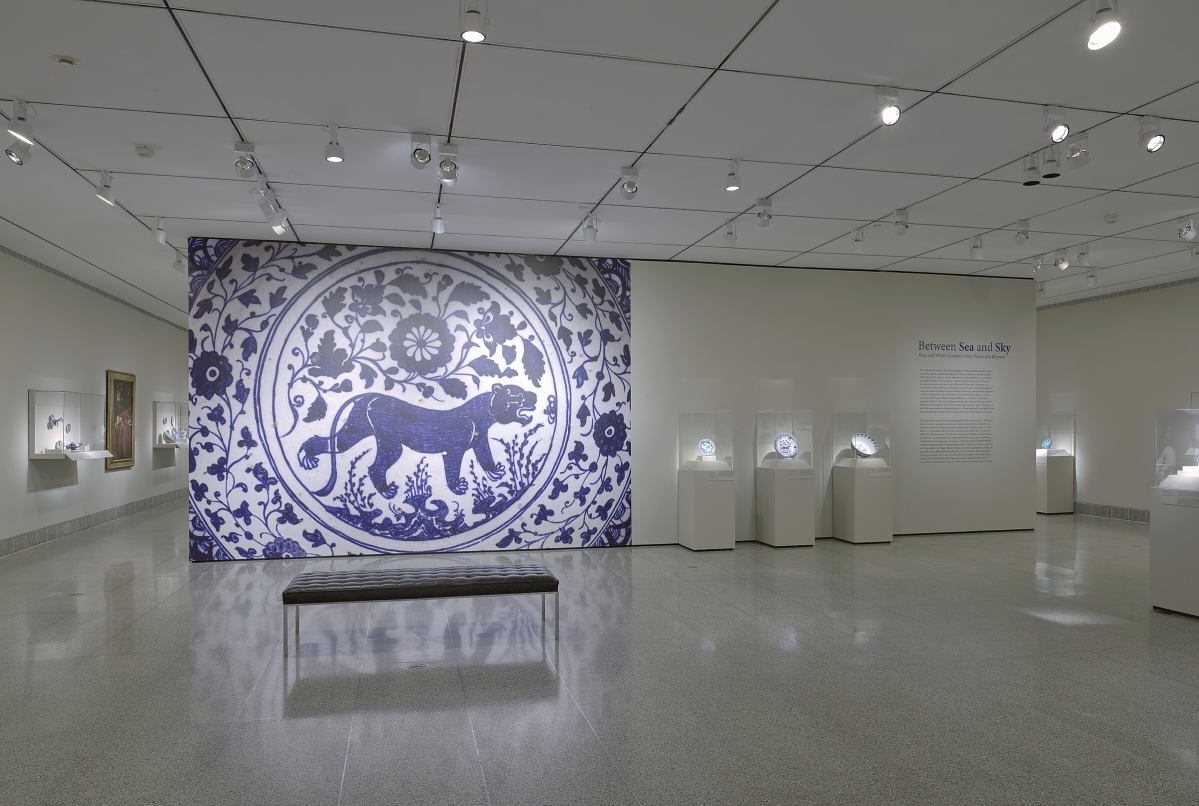
Installation view of “Between Sea and Sky: Blue and White Ceramics from Persia and Beyond” at the Museum of Fine Arts, Houston. Photos by Will Michels. Photograph ©The Museum of Fine Arts, Houston
By Kristin Nord
HOUSTON, TEXAS – The city’s rich and multicultural heritage has been both an inspiration and source for remarkable interdepartmental exhibitions at the Museum of Fine Arts, Houston, in recent years, and “Between Sea and Sky: Blue and White Ceramics from Persia and Beyond” is the latest.
The exhibition features 74 works, many of them on loan from the extraordinary private collection of Kauwaiti resident Hossein Afshar, who has devoted much of his life to the study of the arts of Iran from antiquity to the Twentieth Century. The MFAH’s 2017 survey “Bestowing Beauty: Masterpieces from Persian Lands” first tapped into the Kuwaiti collector’s vast trove and is currently on view as well at the High Art Museum in Atlanta, Ga.
Aimée Froom, PhD, curator of Art of the Islamic Worlds, begins the exhibit traversing the famous land and maritime routes in the Far East some 1,300 years ago. The first Persian Empire, founded by Cyrus the Great around 550 BCE, was one of the largest empires in history as it stretched from Europe’s Balkan Peninsula in the West to India’s Indus Valley in the East. It would reign as a global hub of culture, religion, science, art and technology for more than 200 years before it fell to the invading armies of Alexander the Great.
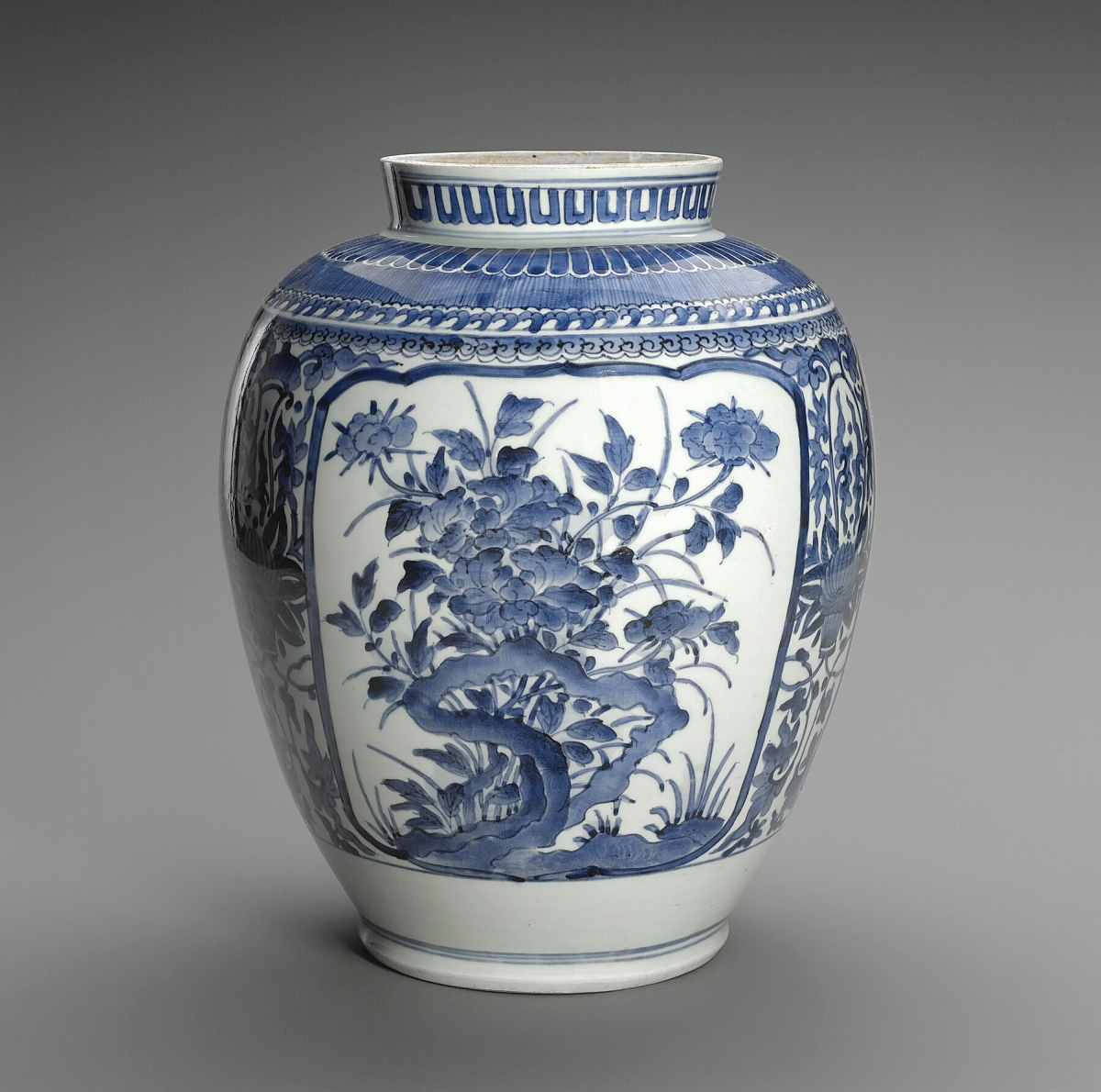
Arita vase, Japanese (Edo), late Seventeenth Century. Ceramic. Sarah Campbell Blaffer Foundation, Houston.
Ceramics made for ideal goods for trade because of their portability and durability. To the stoneware bowls with flat, narrow rims, popular as early as the Abbasid period (750-1258 CE), potters in Central Islamic lands were adding white glazes and embellishing them with blue pigment sourced from Northwestern Iran. The shape of these bowls hailed from Tang dynasty China, but the geometric shapes, abstracted plant forms and calligraphic inscriptions were distinctly Persian.
By the second half of the Eleventh Century, Froom writes, with the invention of stonepaste, Persian ceramics made significant strides toward what would become a golden age. Adhering to this recipe – one part fine white-colored clay and one part crushed alkaline glass frit, with ten parts crushed and sieved quartz – Persian potters had found a way to create a fired product that was close to the hard, white, translucent Chinese porcelain, and which in turn could be engraved, pierced and molded. This innovation would fuel an unprecedented artistic, economic and cultural exchange between Persia and China after the Mongol invasions of the late Twelfth and early Thirteenth Century.
“From early blue and white earthenware to the proliferation of techniques, shapes and glazes made possible by the development of stonepaste, inventive Persian potters continuously expanded their repertoire, often in exchange with China, and made lavish use of the locally sourced and internationally prized blues, cobalt and turquoise, adding brilliant color to the vessels of the Persian table and tiled domes dotting the skies,” Froom writes. “The jewel tones of the ceramics implied wealth and luxury, and the color blue symbolized divinity and divinely ordained political power under the Mongol Ilkhanid dynasty (1256-1335), as the Mongols equated their primary god with the infinite blue sky,” she adds.
.jpg)
Base of a water pipe (qalyan), Persian, early Seventeenth Century. Stonepaste painted in blue and black under transparent glaze; molded. The Hossein Afshar Collection at the Museum of Fine Arts, Houston.
The northern Persian city of Kashan already had a long tradition of luxury ceramic production, and it was there that many early experiments yielded spectacular results. “Potters tried out different shapes, many of which were inspired by Islamic metalwork, and zoomorphic decoration abounded, reflecting longstanding traditions of bird and animal-headed ceramic and metalware vessels produced in both Persia and China,” she notes.
Star tiles were produced with other costly techniques, such as lustre, and sometimes combined with blue pigment. These works, featuring single animals, were used particularly for the decoration of shrines and palaces. They would have been edged with calligraphic borders, Froom adds.
Swimming fish were often depicted on ceramics, glass and metalwork from this period in Persian lands – and the bowl with swirling fish, a stonepaste, painted in black under turquoise glaze, is an extraordinary example.
For drinking vessels, the foot, body, neck and handle were made separately and joined together with slip before firing. Molded decoration on the body of the jug and glazed in blue, often included animals, a floral scroll and inscriptions.
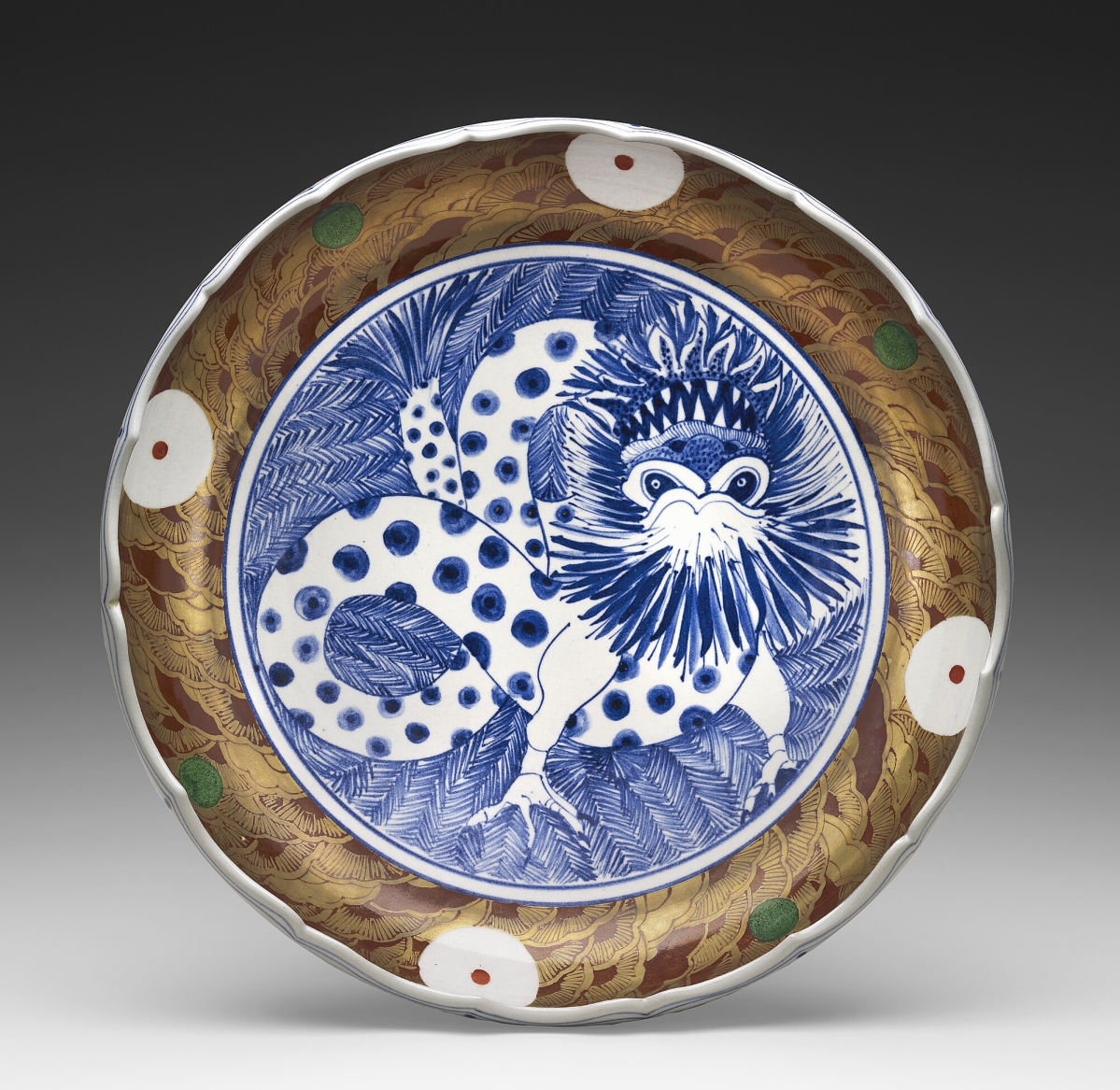
“Dragon Bowl” by Ralph Bacerra (American, 1938-2008), 1979. Porcelain. The Leatrice S. and Melvin B. Eagle Collection, museum purchase funded by the Caroline Wiess Law Accessions Endowment Fund.
In the large wall tile, originally part of a larger epigraphic work, for instance, a partial inscription is combined with the dragon and phoenix and hails from the Ilkhanid period 1256-1353, when the expansion of the Mongol Empire across China and Central Asia facilitated exchange of artistic styles and motifs.
“Needless to say, the story fascinates, as one culture after another attempt to emulate the exquisite porcelain culture of China, bringing new processes and sensibilities to the mix,” Gary Tinterow, director and Margaret Alkek Williams chair at the MFAH, commented in his introduction to an article that appeared in a recent volume of Arts of Asia. “And despite our sense of living in a time of global interconnection, this inquiry underscores how interconnected the world has been for thousands of years.”
By the Fourteenth Century, the blue and white porcelain that China is famous for today was being manufactured in Jingdezhen in the province of Jiangxi, southeastern China. The large vessels made there for export were designed to cater to the tastes and communal dining traditions of the clients of Persian and Arab merchants. Among the treasures in the exhibition is an inscribed dish believed to have once belonged to Shah Jahan (ruled 1628-58), the Mughal emperor who commissioned the Taj Mahal. Shah Jahan’s affinity for blue and white porcelains was shared by the rulers of the Safavid and Ottoman empires in Iran and Turkey, and these objects were often exchanged as royal gifts between courts.
Froom has included a number of bowls from the Fifteenth Century “Cizhou scroll” group, so named for their similarities to Chinese Yuan (1279-1368) and Ming (1368-1644) dynasty Cizhou stonewares. Although related to Chinese originals in terms of design, the black under turquoise aesthetic and incised decorative technique employed for these bowls clearly reflects the work of Persian artisans.
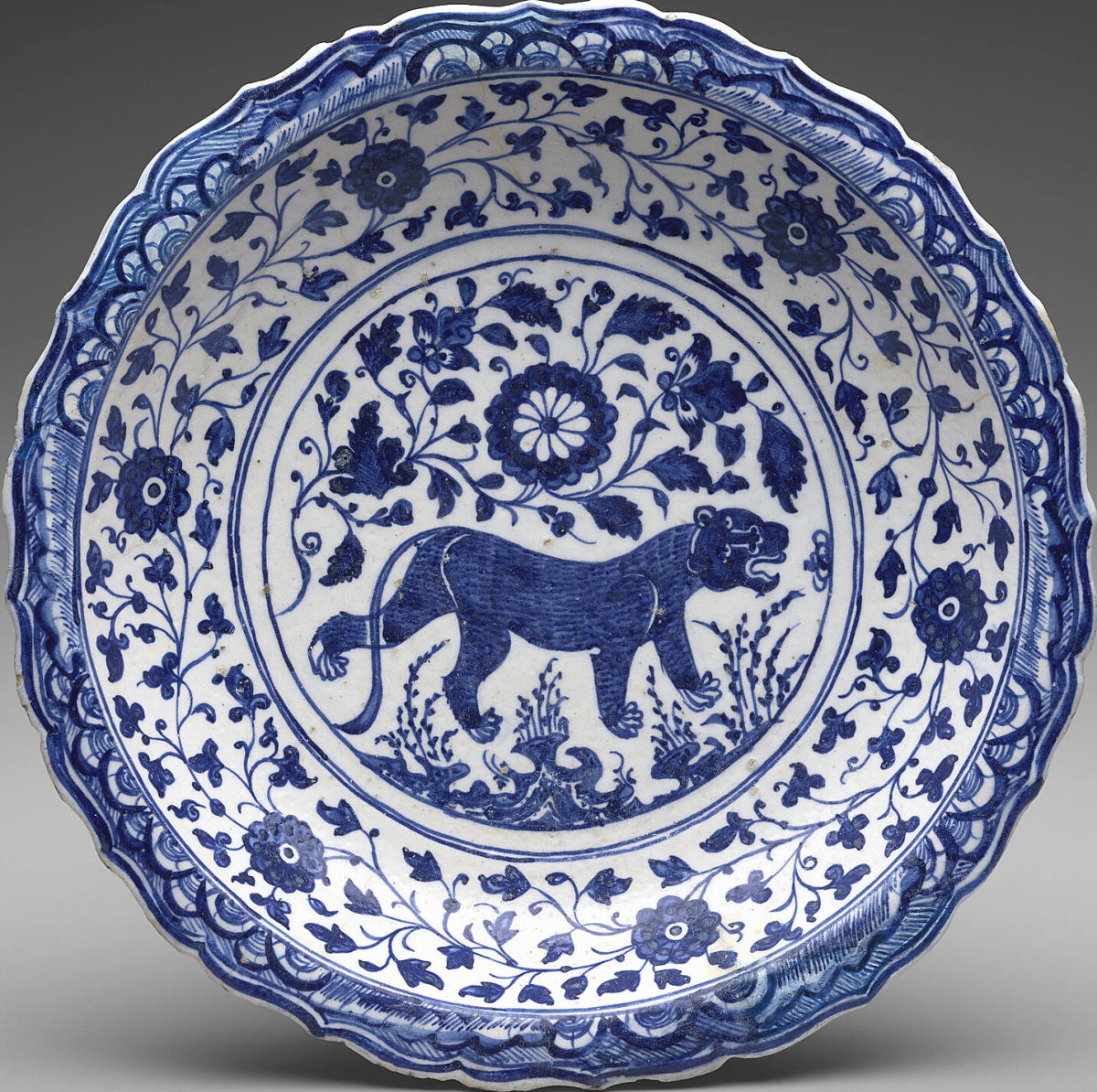
Dish, Persian, second half of the Fifteenth Century. Stonepaste painted in blue on white slip under transparent glaze. The Hossein Afshar Collection at the Museum of Fine Arts, Houston.
Transoceanic trade networks built by European companies in the Seventeenth Century would bring blue and white ceramics into the wider world and fuel further development. For this later chapter Froom has enlisted curators from the MFAH’s two house museums and its Asia Arts and Contemporary Arts departments for a multi-department inquiry.
Collectors in Europe and the Americas were ravenous for porcelain, which came to them alongside shipments of tea, coffee, tobacco and spices transported primarily by the Dutch and East India Companies. Early European potters, who did not have the materials or technology to produce porcelain, developed a style of tin-glazed, blue and white pottery known as delftware, named for Delft in the Netherlands, resulting in coveted household items. Chinese blue and white porcelain, delftware and European porcelain drawn from Miss Ima Hogg’s collection at the MFAH’s Bayou Bend Collection and Gardens, as well as a selection of Japanese blue and white, known as Arita ware – from the Sarah Campbell Blaffer Foundation demonstrate the ways in which local blue and white ceramics manufacturers were proliferating and catering to new markets. From the posset pot, circa 1630-35, designed to hold a warm drink of milk or cream sometimes mixed with egg and curdled with wine or ale, and embellished with spices, to the punchbowl, which dates from the Seventeenth Century, featuring chinoiserie scenes on the exterior and an exhortation on the interior to “Fill the Other Bowl Boys,” craftsmen were responding nimbly to European, and later, American, fashion dictates.
This story-behind-the-story continues to resonate for contemporary artists, a number of whom have contributed both thoughts and works for this exhibition as well. Whether their encounters have inspired them to create art that explores gender exploitation, or to view blue and white ceramics as enduring symbols of the use and abuse of power, their art challenges the viewer to consider how the subliminal messages in material culture often reside close to the surface.
For the months ahead, Froom has organized ongoing conversations picking up on these issues with a series of events, which began with a scholarly exploration of the symbolism and appeal of the color blue in premodern Islamic and Persian cultures. This will be followed by an interdepartmental exploration of the blue and white ceramics held by the MFAH’s various collections. A final virtual program will zero in on the inscribed ceramics in the exhibition as an opening by which to look at the vital importance of poetry in Persian culture.
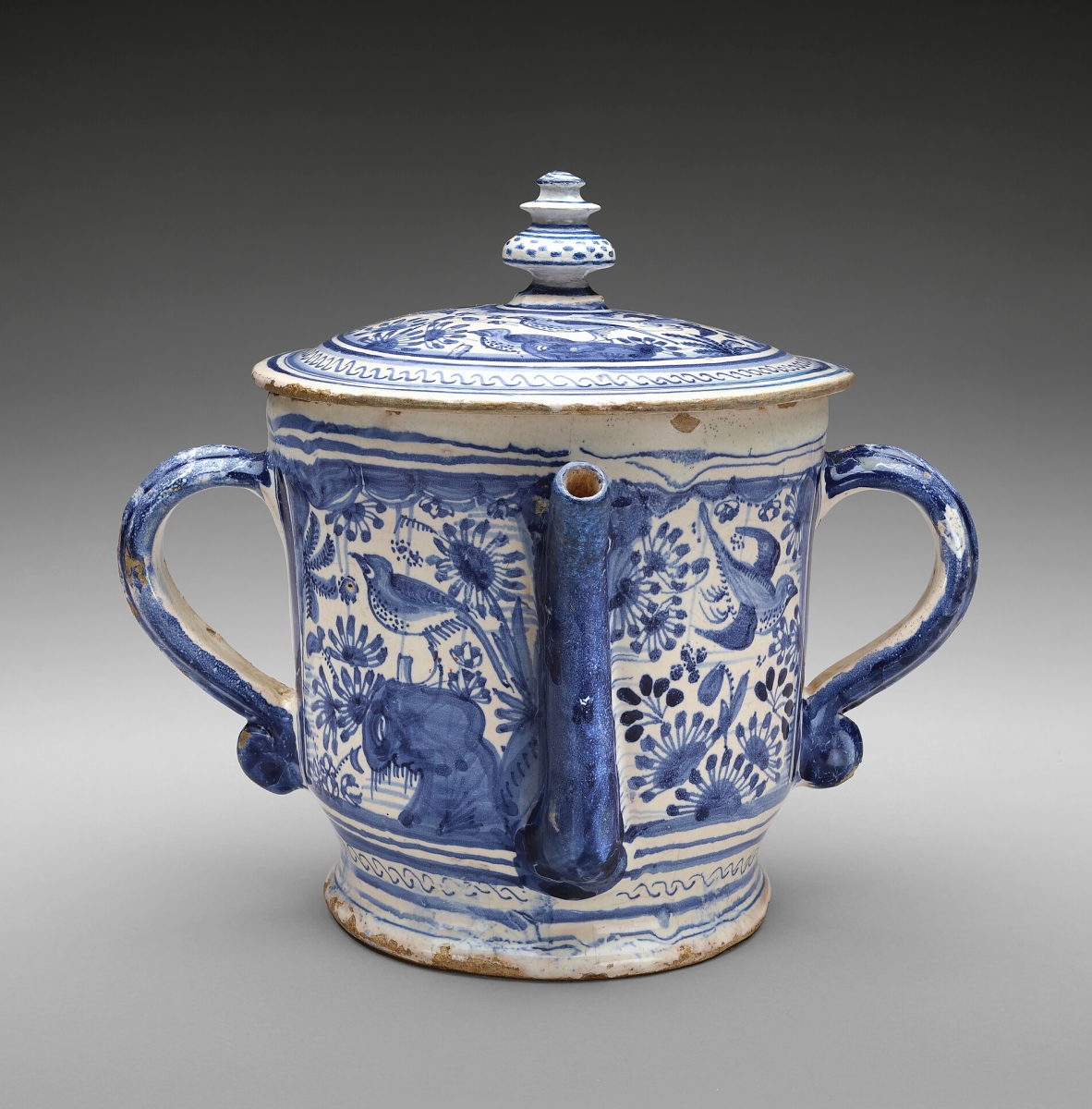
Posset pot, English, possibly Southwark Delftware, circa 1630-35. Tin-glazed earthenware. The Bayou Bend Collection, gift of Katharine Prentis Murphy.
“It is our hope that these extraordinary Persian ceramics will shed light on a new and more nuanced understanding of the many complex layers of technical and artistic exchange between Persia and China and the significant contribution of Persian blue and white ceramics to the world history of ceramics,” Froom said.
This exhibition seems destined to tap into the city’s Iranian-American population, the seventh largest in the United States, as well as art lovers of all nationalities from this most diverse of American cities. It coincides with the completion of the MFAH’s $450 million campus expansion and promises to put the institution, long a local treasure, on the map as a major tourist destination. Tinterow suggests the MFAH has the potential to become a beacon in its own right “for this port city, which for more than a century has welcomed people from all over the world.”
The Museum of Fine Arts Houston is at 1001 Bissonnet Street. For more information, www.mfah.org or 713-639-7300.

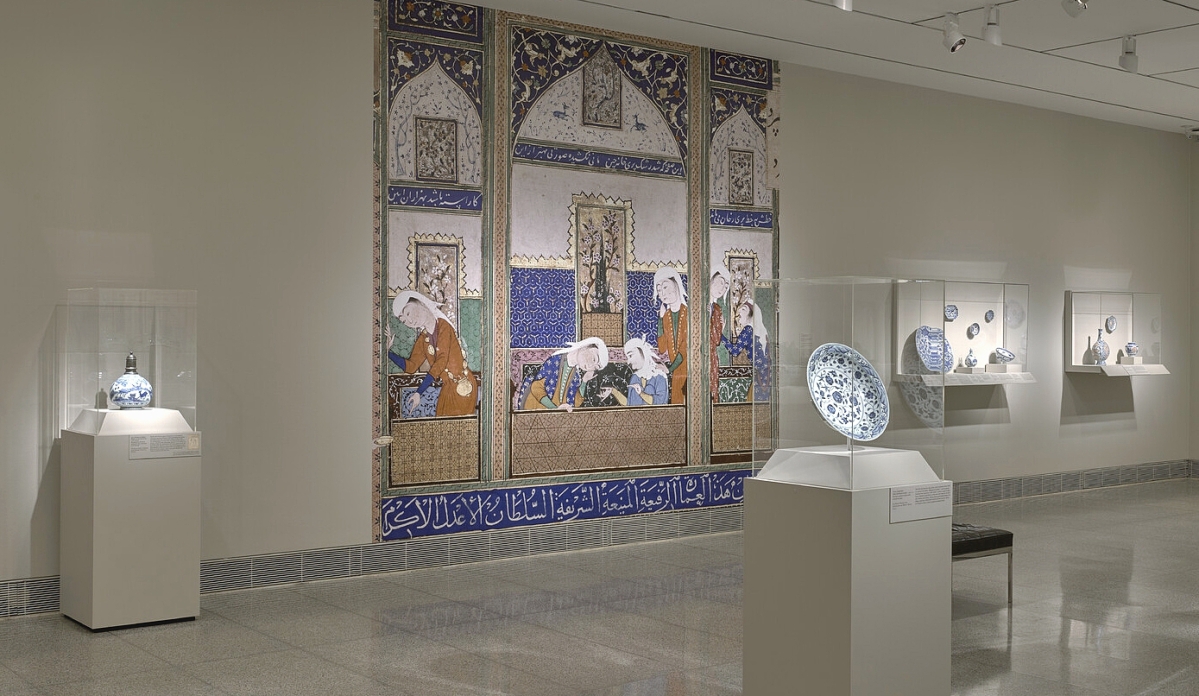
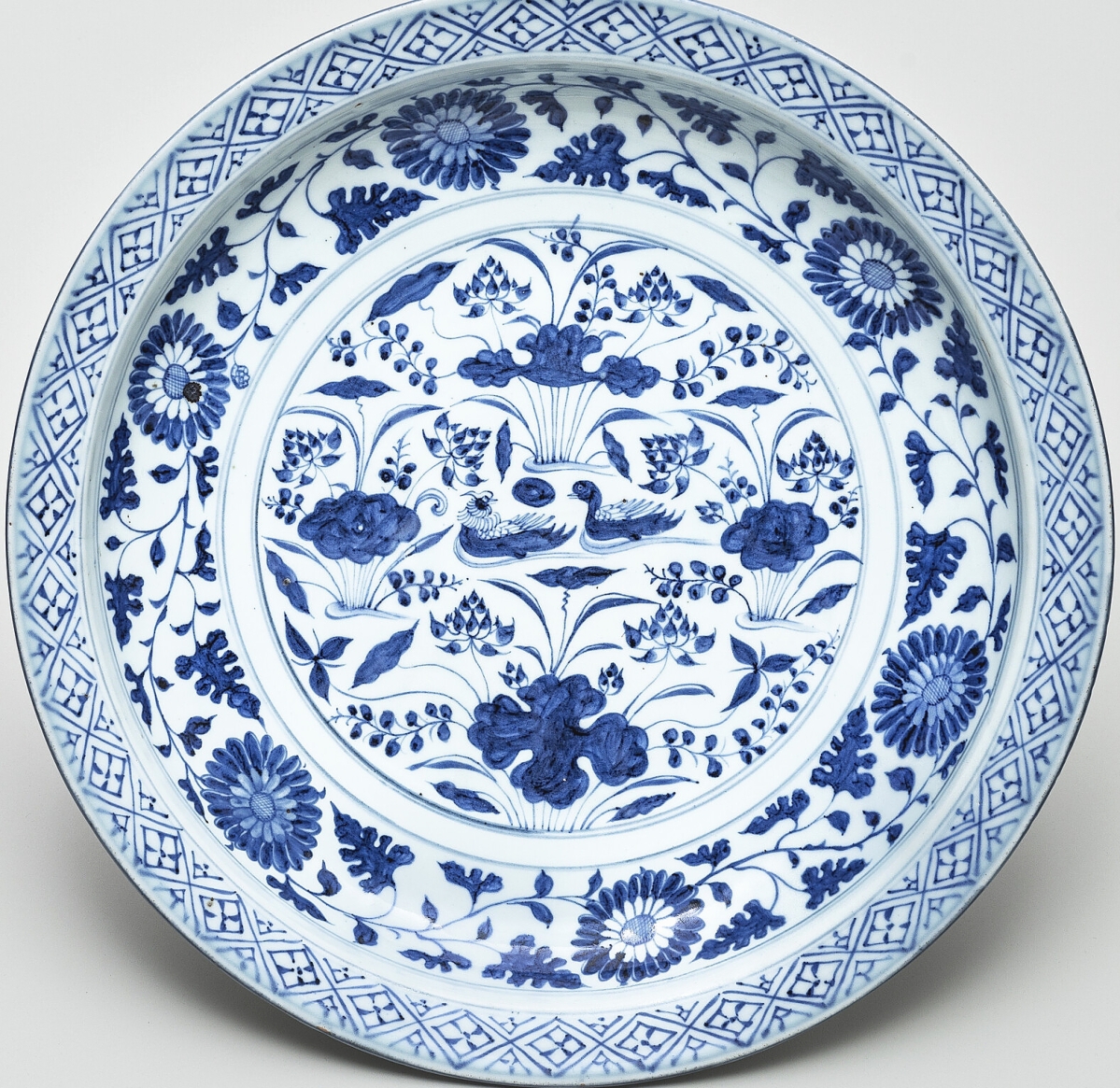
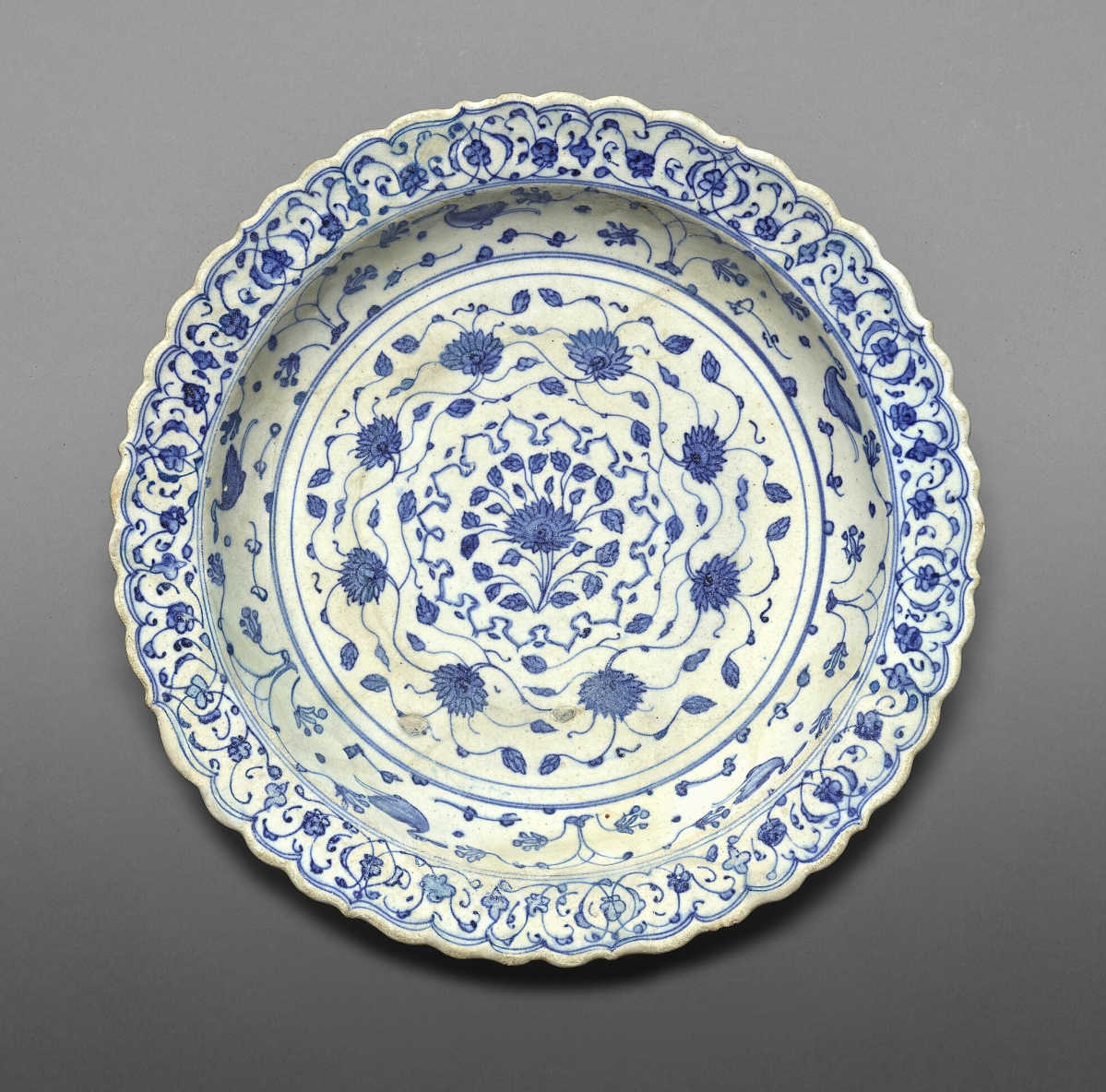
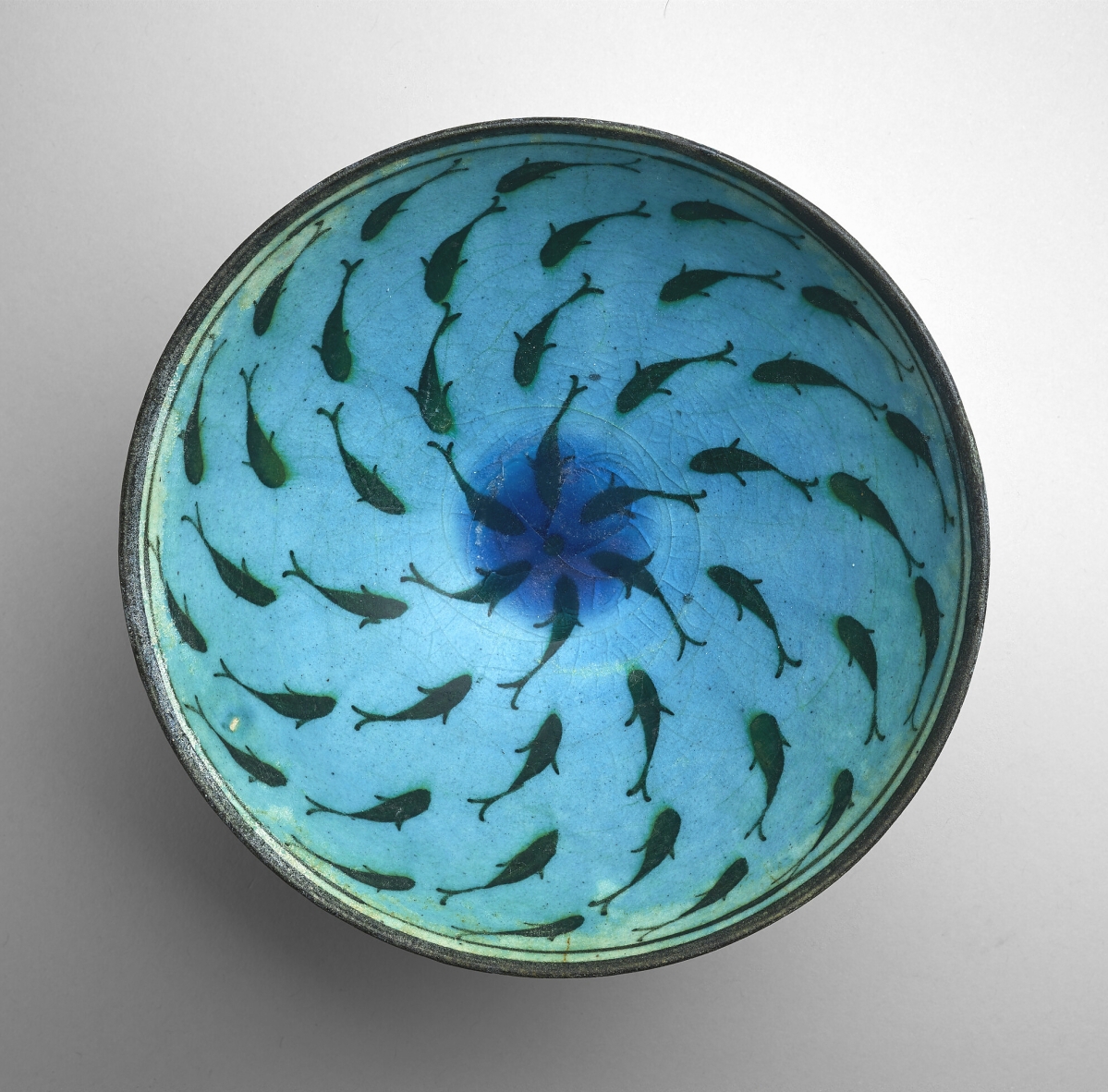
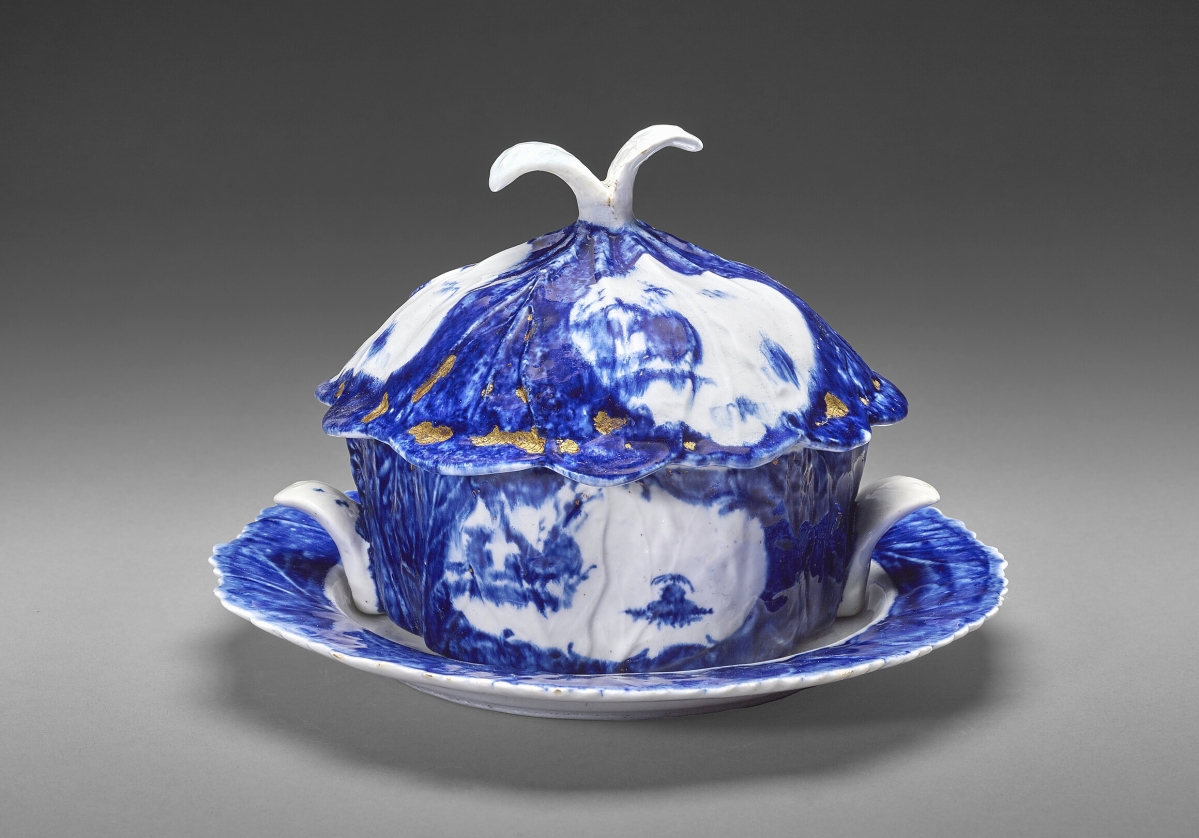
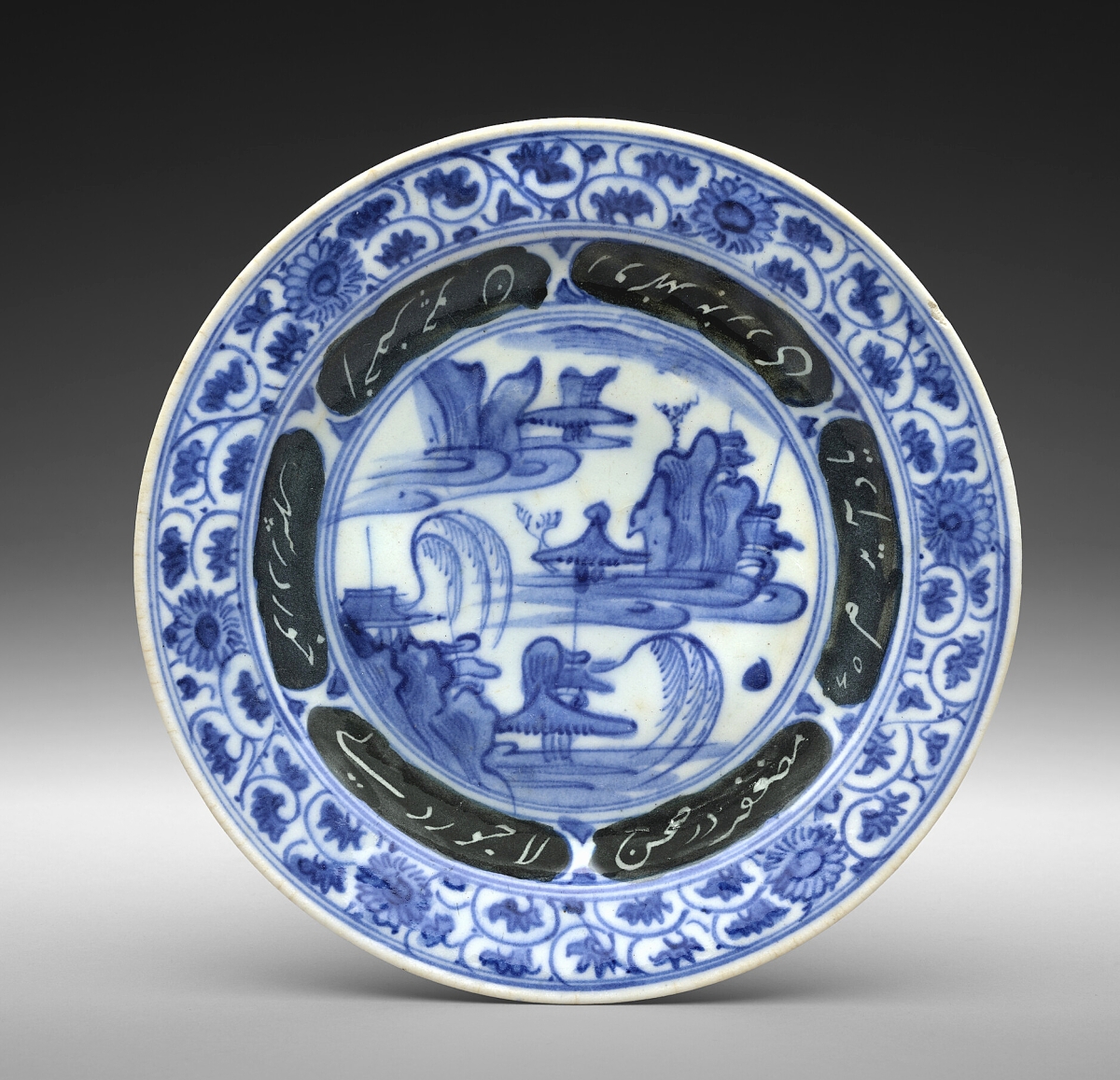
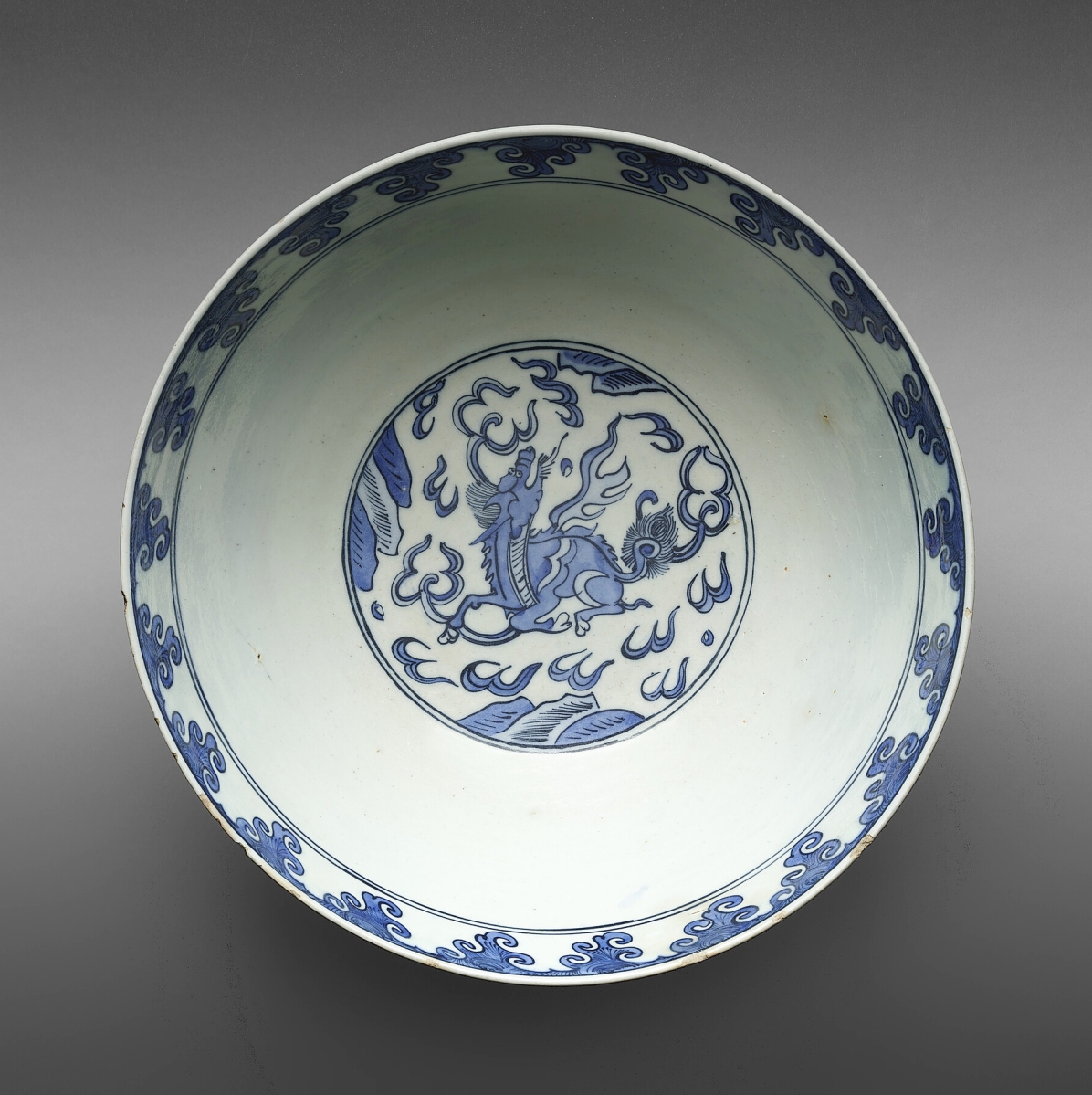



.jpg)





